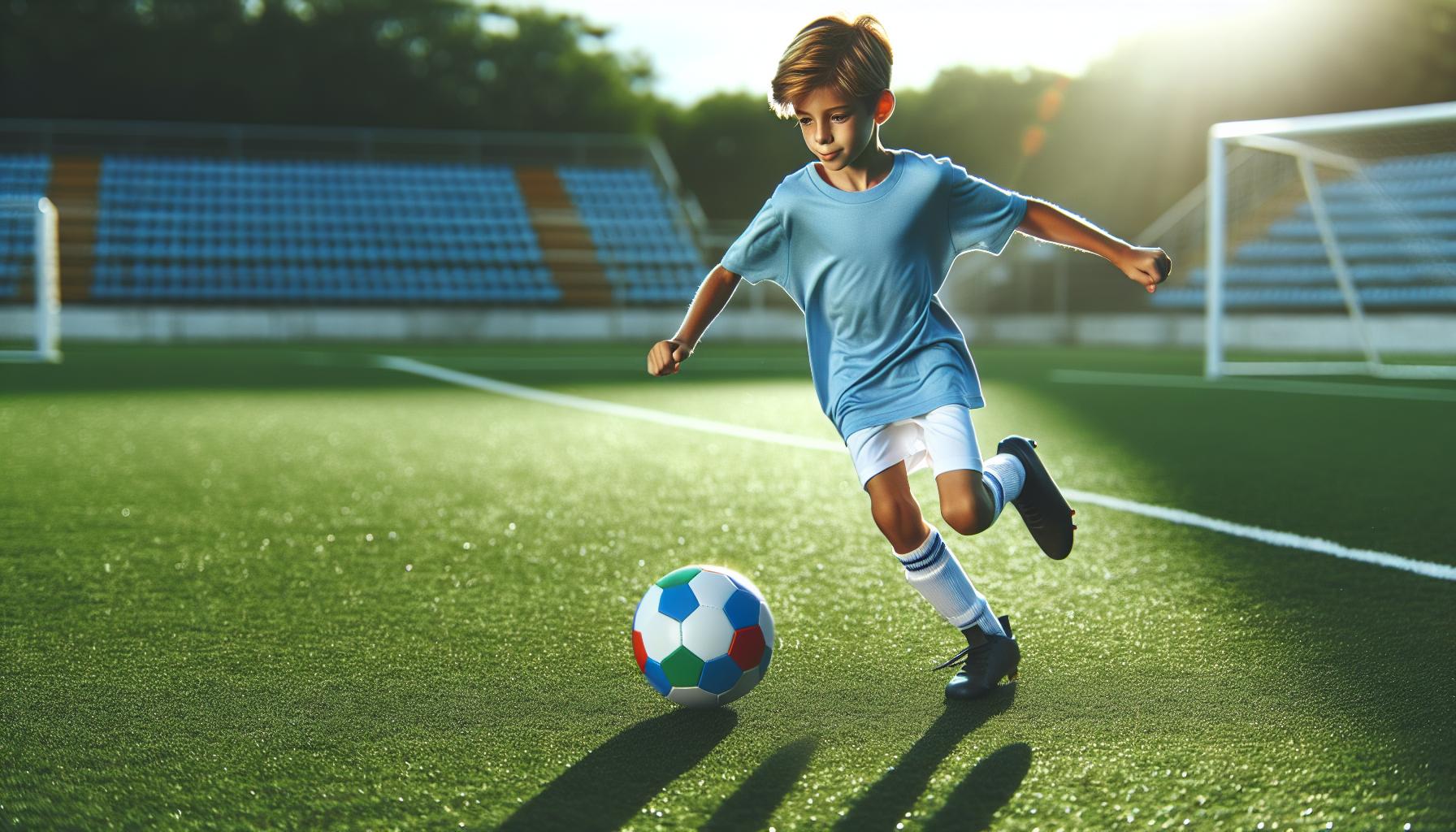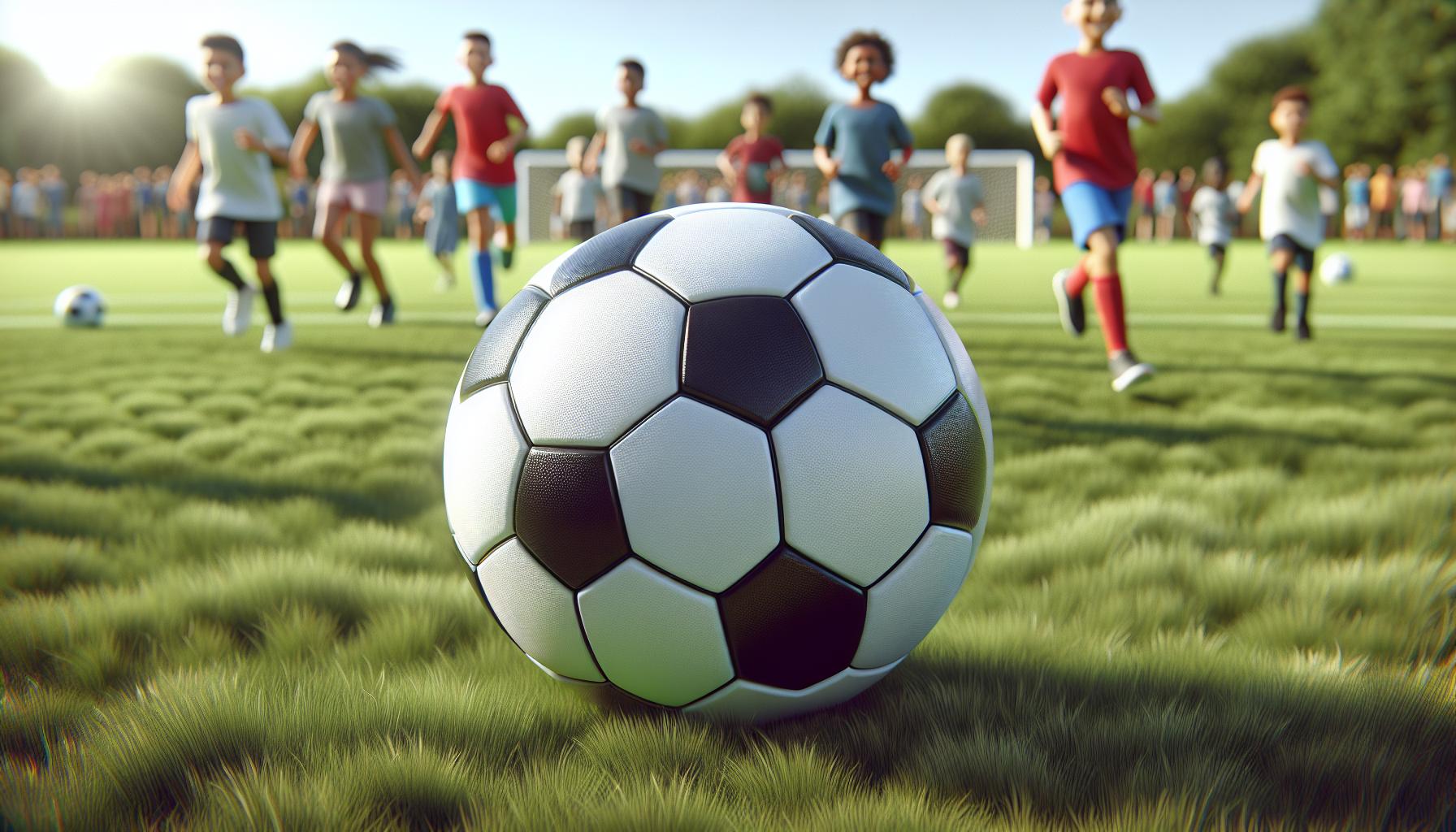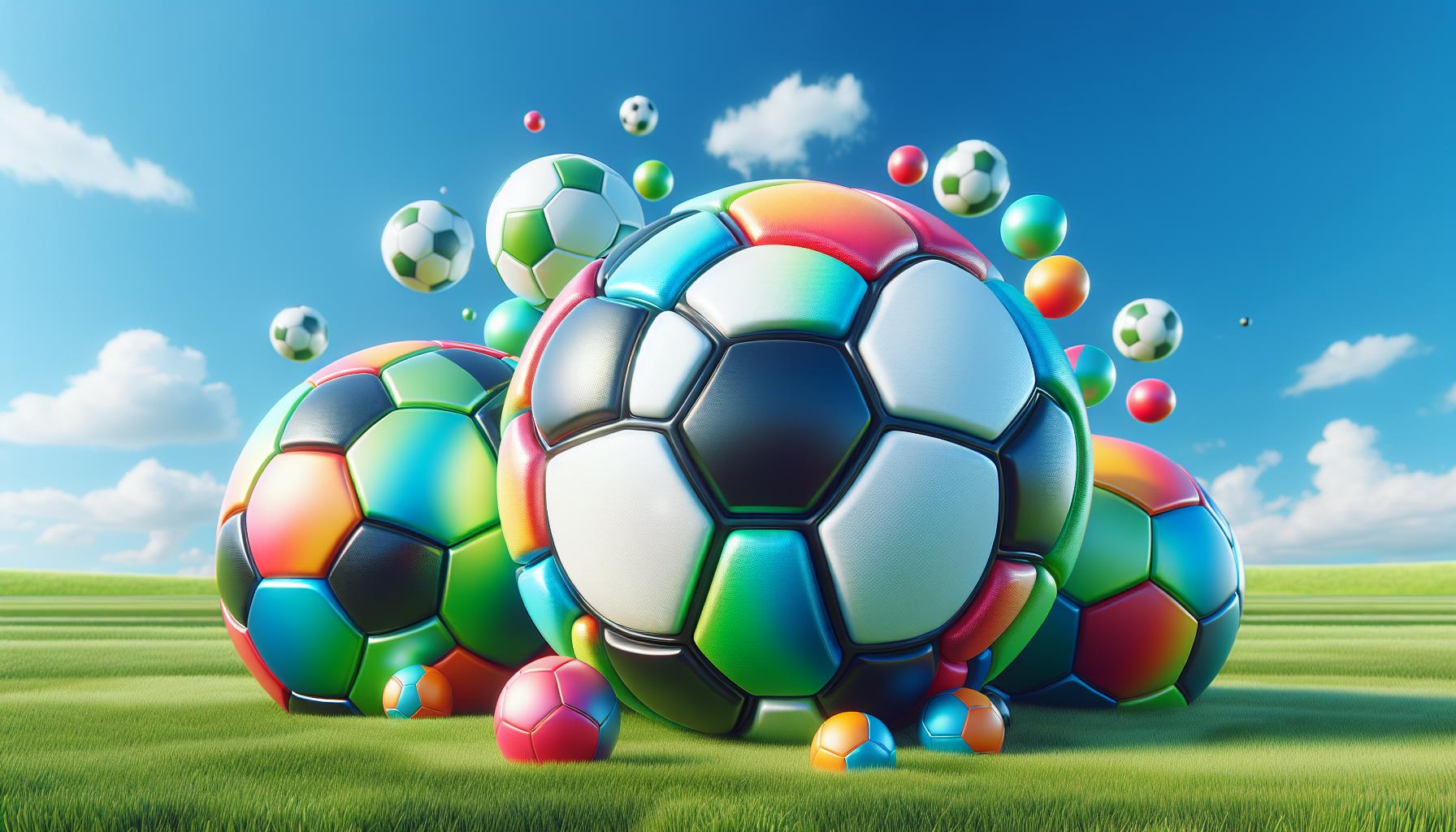Phone:
(701)814-6992
Physical address:
6296 Donnelly Plaza
Ratkeville, Bahamas.

When it comes to youth soccer, choosing the right ball can make all the difference. I’ve seen firsthand how a well-selected soccer ball can enhance a young player’s skills and boost their confidence on the field. Whether they’re just starting out or honing their abilities, the right ball caters to their needs and helps them enjoy the game even more.
In this article, I’ll dive into the key factors to consider when picking a youth soccer ball. From size and material to design and durability, understanding these elements can help parents and coaches make informed choices. Let’s explore how the right soccer ball can inspire the next generation of players and fuel their passion for the sport.
Youth soccer balls come in various sizes, materials, and designs tailored to young players’ needs. Choosing the right ball contributes significantly to skill development and enjoyment on the field.
Different age groups use specific sizes of soccer balls.
The material of a youth soccer ball affects its performance and durability.
The design influences visibility and player engagement.
Durability is crucial, especially for youth players.
Selecting the appropriate youth soccer ball based on these factors enhances gameplay and promotes a positive experience for young athletes.

Choosing the right youth soccer ball involves understanding specific key features that affect performance and playability.
Youth soccer balls come in various sizes based on age. Size 3 balls measure 23-24 inches in circumference and weigh 11-12 ounces, suitable for children aged 8 and under. Size 4 balls, with a circumference of 25-26 inches and a weight of 12-13 ounces, accommodate players between 8 and 12 years old. Size 5 balls, designed for ages 13 and older, measure 27-28 inches and weigh 14-16 ounces. Selecting the correct size is crucial, as it facilitates appropriate skill development and enhances gameplay experience.
Materials significantly influence a youth soccer ball’s performance and durability. TPU (thermoplastic polyurethane) provides excellent grip and resilience, making it a popular choice for competitive play. PVC (polyvinyl chloride) offers affordability but may sacrifice some durability, making it suitable for recreational use. Rubber balls are excellent for training, as they’re highly durable and less affected by weather conditions.
Design also impacts visibility and engagement. Bright colors, patterns, and designs not only attract young players but also improve ball visibility during play. Parents and coaches should consider these aspects when selecting a soccer ball, ensuring it meets both practical requirements and personal preferences.

Using quality youth soccer balls significantly impacts players’ development and enjoyment of the game. The right ball fosters better performance and enhances skills.
Quality youth soccer balls enhance performance on the field. These balls provide better grip and control, allowing players to make precise passes and accurate shots. A well-constructed ball minimizes air resistance, enabling faster speed and smoother handling. When young athletes use high-quality materials like TPU, they build confidence and improve their game with each kick. Reliable performance translates to more successful gameplay, encouraging players to push their limits.
Quality soccer balls contribute to enhanced skill development for young players. Specific size and weight specifications ensure players practice with equipment appropriate for their age and abilities. When young athletes train with the right soccer balls, they develop essential skills such as dribbling, passing, and shooting. As players engage with responsive balls designed for their needs, they gain a deeper understanding of game dynamics and techniques. Overall, quality youth soccer balls create an optimal environment for young players to refine their skills effectively.

Several brands stand out in the youth soccer ball market, each offering unique features and benefits tailored for young players. Here are two prominent options.
Brand A specializes in youth soccer balls designed for enhanced durability and performance. Their balls utilize advanced TPU materials, providing excellent grip during play. Sizes available cater to various age groups, ensuring that young players can find the perfect fit. In addition, Brand A’s vibrant color options improve visibility on the field. Their commitment to quality makes them a popular choice among parents and coaches alike.
Brand B focuses on affordability without compromising essential features required for youth soccer. Their PVC soccer balls are lightweight and durable, making them ideal for recreational play. Designed specifically for ages 8 to 12, these balls offer reliable performance during practice sessions and matches. With attention to bright colors and designs, Brand B enhances engagement for young athletes. Their budget-friendly options attract many families looking to introduce their children to soccer.
Selecting the right youth soccer ball requires consideration of various factors. I focused on age and skill level, as well as budget and durability to ensure young players benefit from their equipment.
Consider each player’s age and skill level when selecting a soccer ball. Youth players aged 8 and under should use Size 3 balls, which measure 23-24 inches in circumference and weigh 14-16 ounces. Players aged 8-12 require Size 4 balls, measuring 25-26 inches and weighing 14-16 ounces. Teens aged 13 and older need Size 5 balls, which measure 27-28 inches and weigh 14-16 ounces. Choosing the correct size enhances comfort and promotes skill development, such as dribbling, passing, and shooting. Aligning the ball with the player’s abilities fosters a more enjoyable game experience.
Budget considerations play a significant role in selecting a youth soccer ball. Quality balls often range from $20 to $100, depending on materials and brand reputation. Consider durable options, as these withstand rough play while remaining budget-friendly. For example, TPU balls offer excellent durability and performance, while PVC balls provide a more economical choice for recreational play. It’s important to balance cost and quality, ensuring the ball effectively meets the player’s needs without breaking the bank. Investing in a durable ball enhances playtime and ensures a better experience for young athletes.
Choosing the right youth soccer ball is essential for developing young players. It not only impacts their skills but also their enjoyment of the game. By considering factors like size material and design I can help ensure that kids have the best tools for success on the field.
Quality soccer balls enhance performance and build confidence allowing players to focus on honing their skills. Whether I’m a parent or a coach I know that investing in the right equipment can make a significant difference in a child’s soccer journey. With the right ball in hand young athletes can thrive and truly fall in love with this incredible sport.